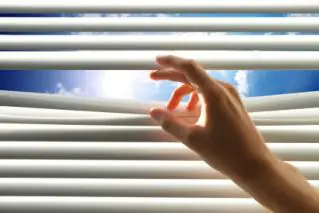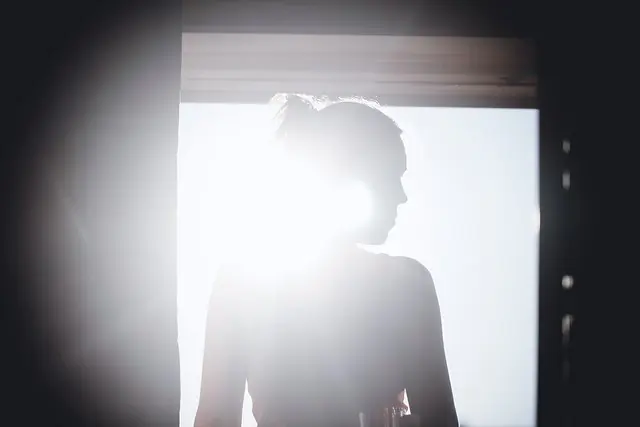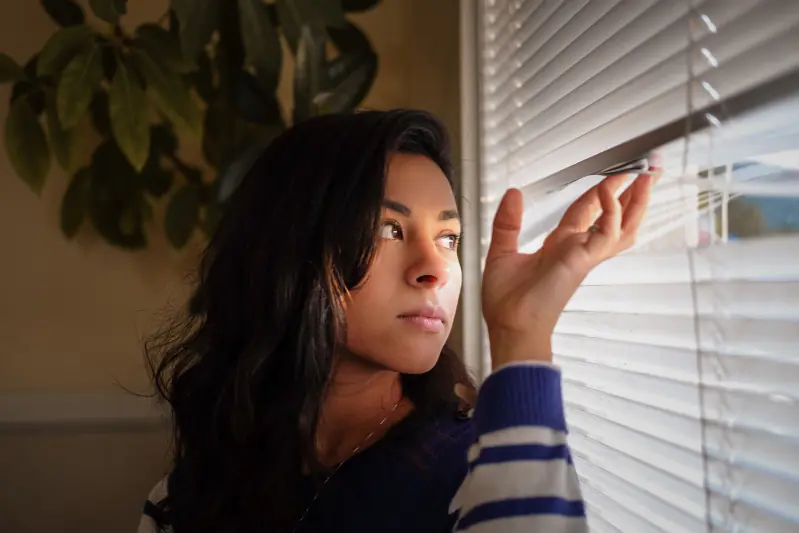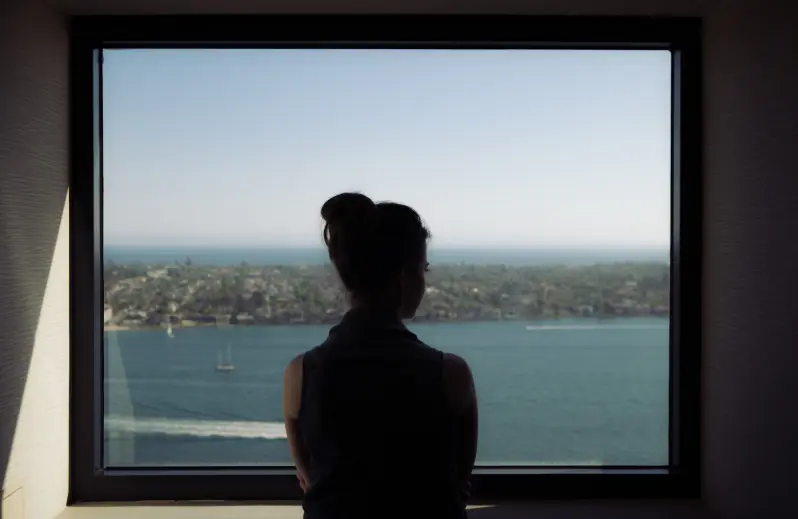
This means is it possible to tan through glass? The answer is yes, but only if the glass transmits this type of sunlight, such as ultraviolet radiation - it is they that contribute to the formation of brown coloring of the skin. Ordinary glass, as we all know, allows only 5% of such rays to pass through, so it is hardly possible to get a tan here. But, there are other types of glass, for example, quartz, everything is not so bad. Another type of rays are infrared (they give a feeling of warmth), so they penetrate and therefore you can “warm up” under the influence of the gentle sun, but these rays do not contribute to tanning.
You can sunbathe through a closed window. But certain conditions must be met. At least one of the following. 1. Instead of glass, there is a thin layer of polymer that transmits ultraviolet rays well in the “middle ultraviolet” UV-B region, 315-280 nm. 2. Ordinary glass, but thin and very well cleared of ions that absorb ultraviolet radiation in the specified area. Such glass will be very expensive, but theoretically it is still possible. In this case, the sun should be “southern” (beyond the Arctic Circle and in direct sun you don’t get much sun) and shine directly through the window. 3. An ordinary window, the sun is from the south, shining directly. The only drawback is that you will have to sunbathe for a very long time, for hours. Plain glass transmits only soft ultraviolet light (UV-A): 400-315 nm. It causes darkening of the skin through a different mechanism that is much less effective.
Outside the home
Can you tan through glass? If you read reviews on forums and social networks, then, on the one hand, the question is very simple. But on the other hand, it is very controversial. Practitioners and theorists have quite different opinions on this matter. The question is interesting to those people who have the impression that, standing at the window on some sunny day, they sunbathe. Or there was a feeling that you could get a sunburn through the glass. For example, while on public transport, crowded with people, when it is impossible to go to the shady part of the cabin. Some are sure that ultraviolet radiation through glass can harm the driver. In fact, it is extremely difficult to get a tan through closed car windows. After all, the intensity of ultraviolet radiation is clearly insufficient. However, when the driver is driving in a car, he exposes himself to the rays of the sun from different points. In this regard, naked parts of the body get tanned through the side windows that are slightly open. An interesting answer to the question: “Can you get a tan through glass?”

Sunny days
However, here is an example from life, indicating whether it is possible to tan through glass. One man constantly practices meditation in the sun. Especially in the autumn and winter. From the very morning he sits in a comfortable chair directly opposite the window. He closes his eyes and looks at the sun through his eyelids, receiving thirty minutes of warm pleasure. The sun nicely caresses his face. Now imagine the picture that in the middle of winter his friends are looking at him in surprise. And then they ask where he got that tan. “Definitely not in a solarium,” he replies.

With a slight tan
Ordinary glass does not block ultraviolet soft rays UV-A with a range from 315 to 400 nm. But the method of tanning itself is very ineffective. The process is quite slow. Although you can still use it. If a person has enough patience, then this is completely justified. Especially if these are people with good melanin content in their skin. Is it possible to get tanned through window glass? Of course, you won't get a luxurious tan. But, according to those in the know, it will be quite possible to get rid of acne on the face. A healthy tan is also possible. As is known, its appearance is directly related to the presence of melanin pigment. In turn, the appearance of the latter is possible when ultraviolet rays touch the skin. The “color” of a tan protects the body from sunburn.

Ultra-violet rays
There are three types of ultraviolet light. Thus, ultraviolet C destroys all living things, but is neutralized by the Earth’s atmosphere. Ultraviolet B, which causes sunburn, is absorbed by the atmosphere by ninety percent. But ultraviolet A easily penetrates the atmosphere and glass. By and large, if the issue of getting a “tan in your slippers” is so important for you, you can get it on an open balcony or on the roof. Can you tan through glass? It's a matter of time and desire. If ordinary glass does not allow ultraviolet radiation to penetrate, then you can use one that allows it to pass through. This will be quartz - the most effective conductor for ultraviolet radiation. Use it to glaze your loggia - and you are guaranteed a tan. After all, this is the material used in solarium lamps.

Tanning came into fashion in the last century and is still popular among fashionistas. How harmful or beneficial is tanning? How to sunbathe correctly to protect your skin from burns? Not everyone knows the answers to these questions. But the question is: is it possible to sunbathe through glass? - at first glance it seems quite simple. "Of course not!" - you say. However, why not? After all, the sun warms through glass, and there are different types of glass.

What is a tan and why does it appear?
Our sun releases energy in the form of light, heat and ultraviolet radiation. Ultraviolet rays, unlike visible light energy, are invisible and cannot be felt either, but they have a unique property - the ability to modify the chemical structure of matter and cells.
When ultraviolet radiation hits human skin, melanin is produced in its middle layer, the task of which is to control the influence of UV rays on the surface of the body.
Tanning is a protective reaction of the skin.
Melanin darkens under the influence of ultraviolet rays, acquiring a brown tint. And through this skin color, harmful rays cannot penetrate deep into the body and cause harm to it.
The skin's ability to produce melanin varies from person to person, depends on a person's genetics, and is often inherited. It happens that the skin is completely unable to produce melanin; for such people, exposure to the sun is contraindicated.
Ultraviolet radiation in small doses is necessary for the human body. Under the influence of ultraviolet radiation, the body produces vitamin D, which is especially necessary for children.
Before the skin gets a nice tan, it usually becomes inflamed and turns pink. With prolonged exposure to the sun, the skin can become very inflamed and a burn will appear on the body. It should be understood that prolonged exposure to the sun is very dangerous. Tanning needs to be achieved carefully, gradually, at a certain time, and the longer the better. Once your skin reaches the desired brown tone, sun exposure is safer.
Types of ultraviolet rays
Ultraviolet rays come in different lengths and, depending on this factor, are divided into three groups:
- Group A rays have a wavelength from 315 to 400 nanometers - they penetrate the atmosphere, glass, and penetrate the upper layer of human skin, but they almost do not reach the middle layer and therefore the tan almost does not stick with such rays.
- Group B rays - their length is from 280 to 315 nanometers - some of them do not pass through the ozone layer, they cannot penetrate glass, human skin is capable of reflecting 70% of such rays, 20% penetrate only into its very top layer, but the remaining 10% UVB rays are able to penetrate the middle layer of the skin and give the skin a tan.
- Group C rays – from 100 to 280 nanometers. Such rays are capable of destroying all living things, but they do not pass through the atmosphere.

Tanning through an apartment window - myth or reality
Is it possible to get tanned through window glass? Let's figure it out.
Only group A ultraviolet rays can pass through glass, which have a gentle effect on the skin, almost do not penetrate into its middle layer, as a result, melanin is not released and the skin does not darken.
Moreover, if a person is behind glass in his kitchen or glassed-in balcony, tanning through the glass is impossible. After all, group B rays are not able to penetrate ordinary window glass. Since we know that only under the influence of these rays does a tan appear on the human body, we can say with confidence that the tan does not fall through glass and it is impossible to tan through an ordinary window, except to warm up.
Conclusion: you cannot sunbathe through an apartment window or on a balcony.

Car tan
Is it possible to get tanned through the windshield of a car while traveling or just sitting in the car?
Many motorists are sure that they sunbathe while driving for a long time, especially in the summer. The windshield of a car is made of the same material as windows in residential buildings. Group B ultraviolet rays are not able to penetrate car glass. It is possible that the A-rays that penetrate through it, with prolonged exposure to the skin, still fall under its top layer, causing a light tan, but this will probably take several tens of times more time than when human skin is exposed to rays -IN.
That is, theoretically, only truck drivers who drive all day long will be able to get a tan.
Conclusion: it is IMPOSSIBLE to tan through the glass of a car window.

Tanning through organic and quartz glass
Is it possible to tan through organic and quartz glass?
It should be noted that there are different types of glass and among them there are those that transmit infrared rays of all groups. For example, some types of organic glass allow UV rays to pass through. Quartz glass also transmits ultraviolet waves, which is why quartz glass is used in lamps intended for quartzing rooms.
Conclusion: you can get sunburned through a glass window, but it all depends on the glass itself.

Whether the skin tans through glass or not, the answer is clear - you cannot tan unless through certain glasses.



